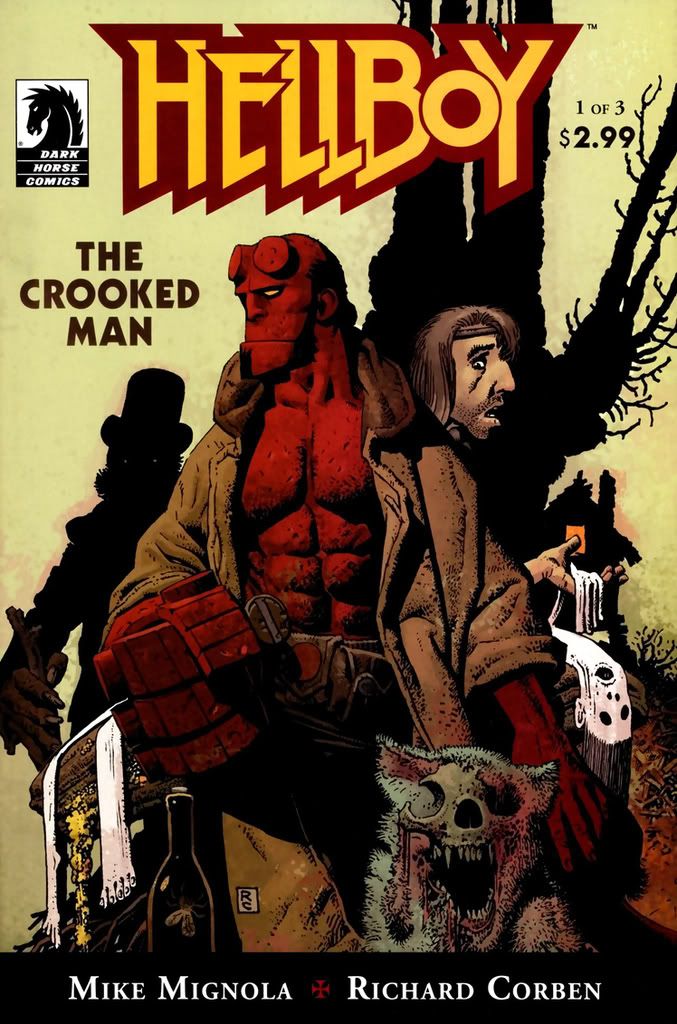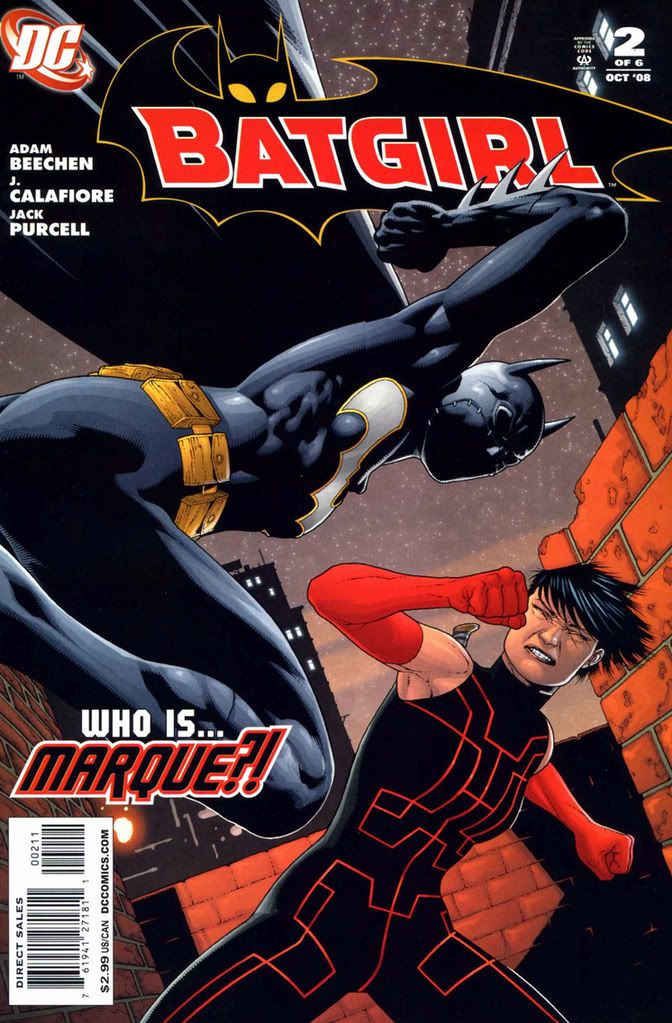 Hellboy: The Crooked Man #1 (of 3)
Hellboy: The Crooked Man #1 (of 3)Publisher: Dark Horse
Story: Mike Mignola
Art: Richard Corben
Colors: Dave Stewart
Capsule review: Mike Mignola and Richard Corben take Hellboy deep into the misty Appalachian mountains where he finds himself battling a twisted (but sharply dressed) evil for the souls of a wandering hillbilly and his childhood friend. Rustic witchcraft lore and a unique setting make for one of Hellboy’s most atmospheric and affecting tales.
My list of top horror comic artists is pretty short these days. Sure, there are the old masters, the guys who did stuff for EC and Warren back in the olden days before I was born. But among today’s active artists? Not including a few from Japan, I’d put only Mike Mignola, Richard Corben and Bernie Wrightson at the top. And what a disparate trio. While I’d love to see Wrightson illustrate a Mignola strip, I think Corben is the perfect match for Mignola’s Hellboy.
Strangely enough for two artists who work together so well, Corben’s and Mignola’s art couldn’t be more different. Sure, neither adheres to classical ideas of body proportion, and they both work a kind of moody magic on the page. But Mignola’s figures are abstractly geometric, almost flat, while Corben’s are weirdly textured and more three-dimensional. You can even spot some odd Jack Kirby or P. Craig Russell flourishes in Mignola’s blocky monsters.
Corben, though?
Richard Corben is unique. I can’t think of anyone else whose art his resembles. Oddly stretched or squashed figures, shadows with a crumbly edge that make his figures pop, but also gives them strange fungoid textures. Creepy and nauseating, but in a good way. I mean, we’re talking about horror comics here.
Mignola writes to Corben’s strengths by setting The Crooked Man in the Appalachians of Virginia and peopling the hills with melancholy backwoods types. Corben can distort their bodies almost to the point of caricature and bathe them in pale light and inky shadow. Stick them in haunted dells, thickly wooded and mossy, heavy with portents of evil. Depict in full, sickly detail women who leave their rubbery, cast-off skins lying around on beds in wooden shacks, temptresses who ride on desiccated horses. And a hideously misshapen figure in a top hat who plays both ends against the middle as he does Satan’s work on earth. Or is he, himself, Satan?
Despite the weirdness of it all, Corben gives the most visually ludicrous figure, Hellboy himself, a solid muscularity that makes him almost plausible with his sawed-off horns, red skin and wrinkled trench coat.
After wreaking havoc through Lovecraftian pastiches, Celtic adventures and stock Eastern European set-tos, Hellboy plunges into the folklore of his adopted home country. It’s a more than welcome change and really invigorates this installment. There are only so many times Hellboy can bop undead Nazis or tangle with worms and tentacles from beyond space before it all blurs together. Mignola’s plot and dialogue are heavy on the southern gothic, with down-home characters solemnly intoning lines like, “So one day I found me a squashed black cat… An while my ma was out, I boiled it till it went all to pieces… Then I took that mess down to the creek to wash out the bones.”
These are superstitious earth-folk, and they have good reason to be. Their mountains are haunted places where Satan’s agent shambles through the woods and offers deals too good to be true, and none too safe for the immortal soul. These mountain people seem to approach living half in a nightmare with a tired fatalistic acceptance, and not even the sight of a muscle-bound demon wearing clothes and toting a big pistol throws them off their stride. Hellboy fits right in from the start.
It reminds me of “Jess-Belle” one of the most inventive and original Twilight Zone episodes, penned by Earl Hamner, Jr., who later went on to create The Waltons. Like Crooked Man, “Jess-Belle” is set in the Appalachians (the Blue Ridge Mountains, to be exact) and deals with witchcraft and its consequences. In it, James Best plays a young hillbilly bewitched away from his fiancee by the darkly beautiful and ultimately doomed Jess-Belle, played by Anne Francis. Between that TV story and Hellboy’s, I guess it proves cain’t nobody walk the paths of the fallen without payin’ a heavy toll. We all know whatever Faustian bargains Hellboy’s new pal Tom Ferrell made in his past will come at a similarly heavy price for both him and his childhood friend, Cora Fisher.
I’m not sure what John-Boy would make of Hellboy, but this is as close as we’re likely to come to that particular crossover. Unless Mignola and Corben are building towards a climactic scene where Hellboy bids goodnight to an almost endless stream of hard-working and good-hearted farm people with their various genders appended to their given names.


